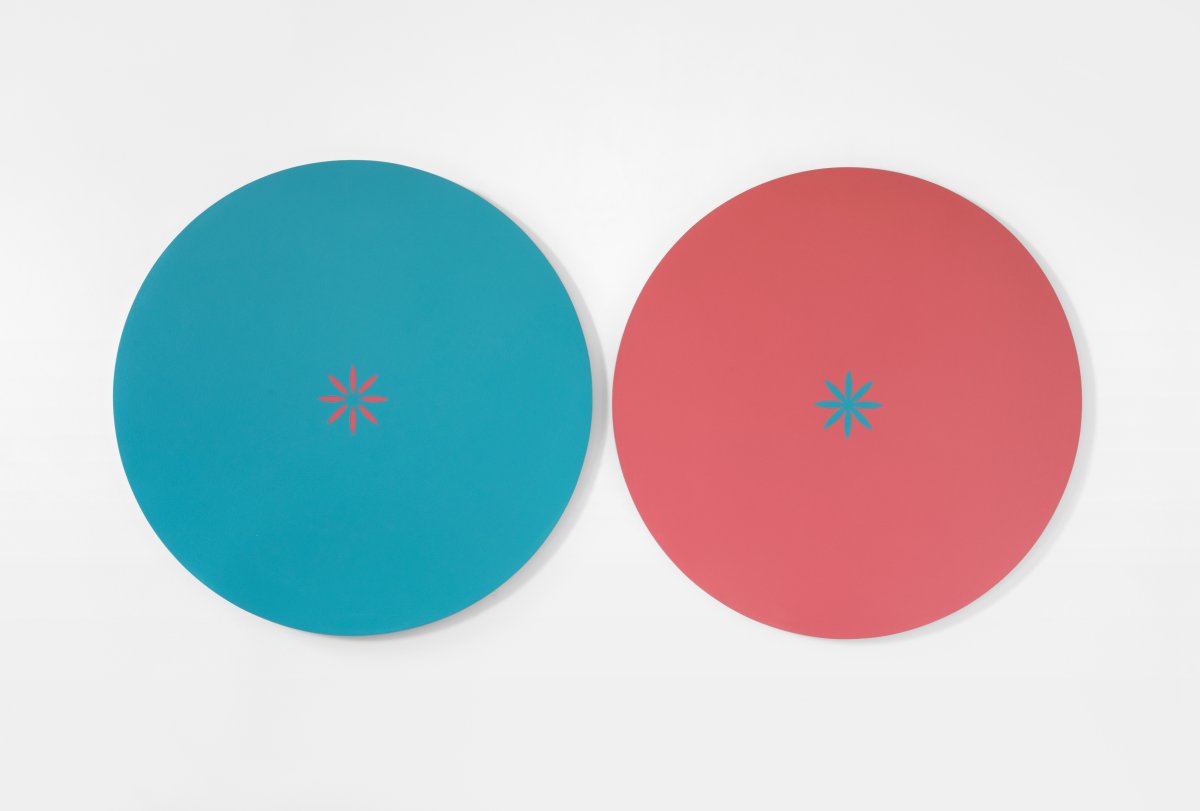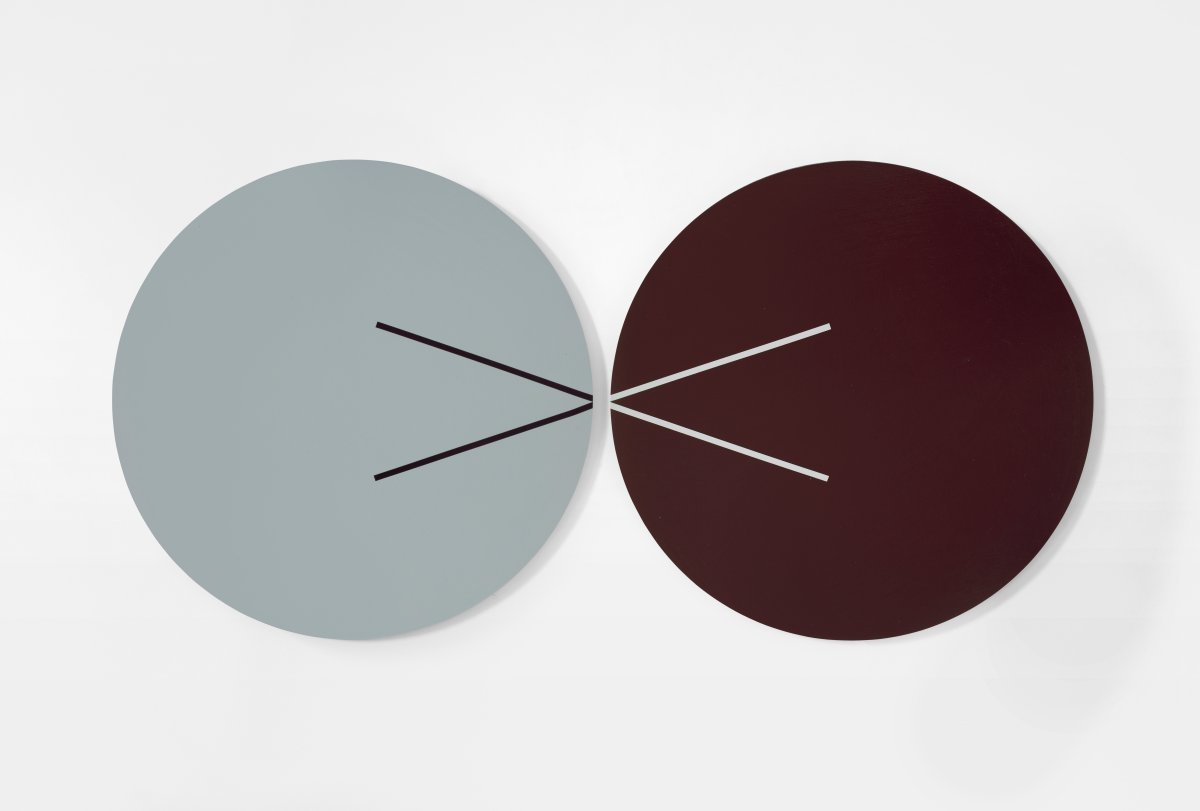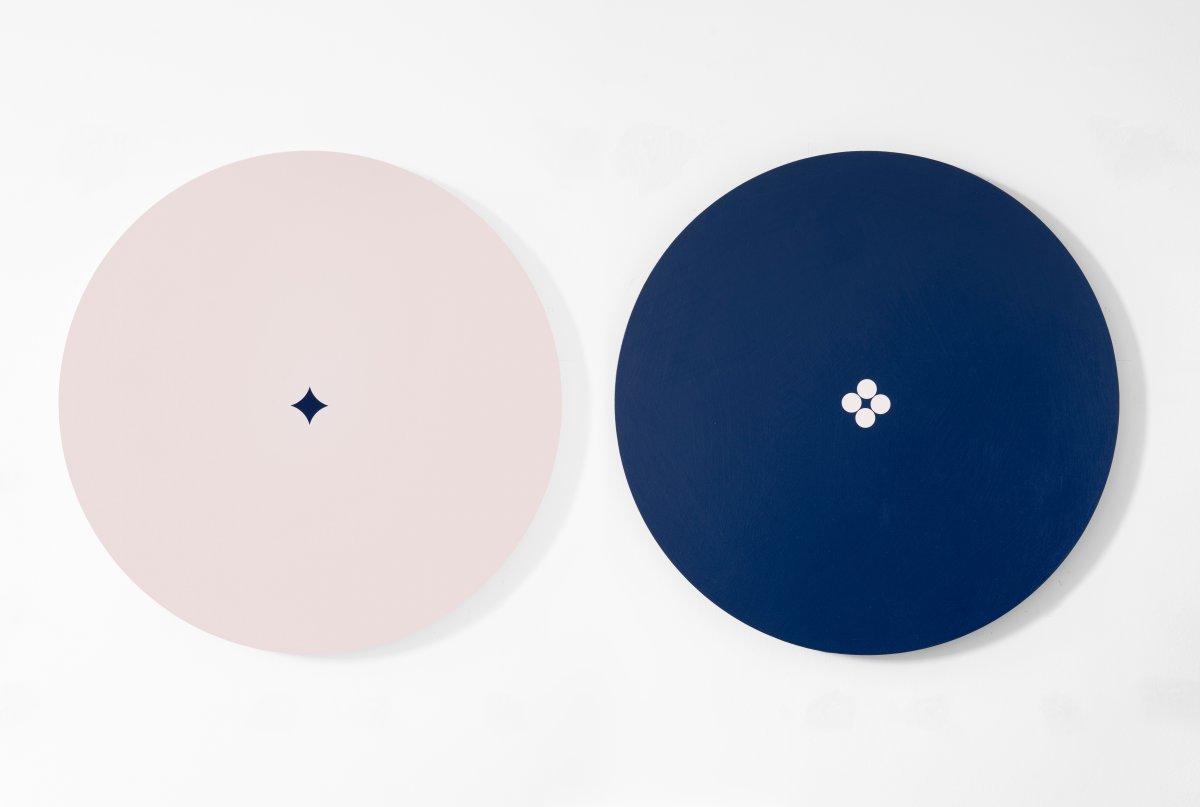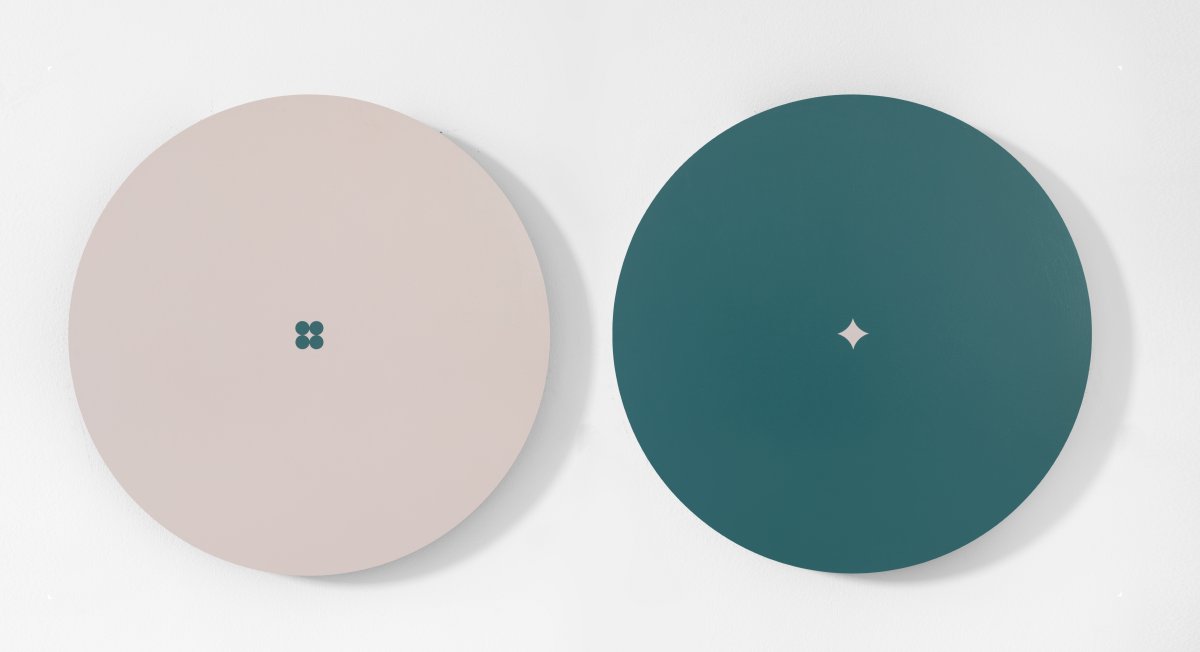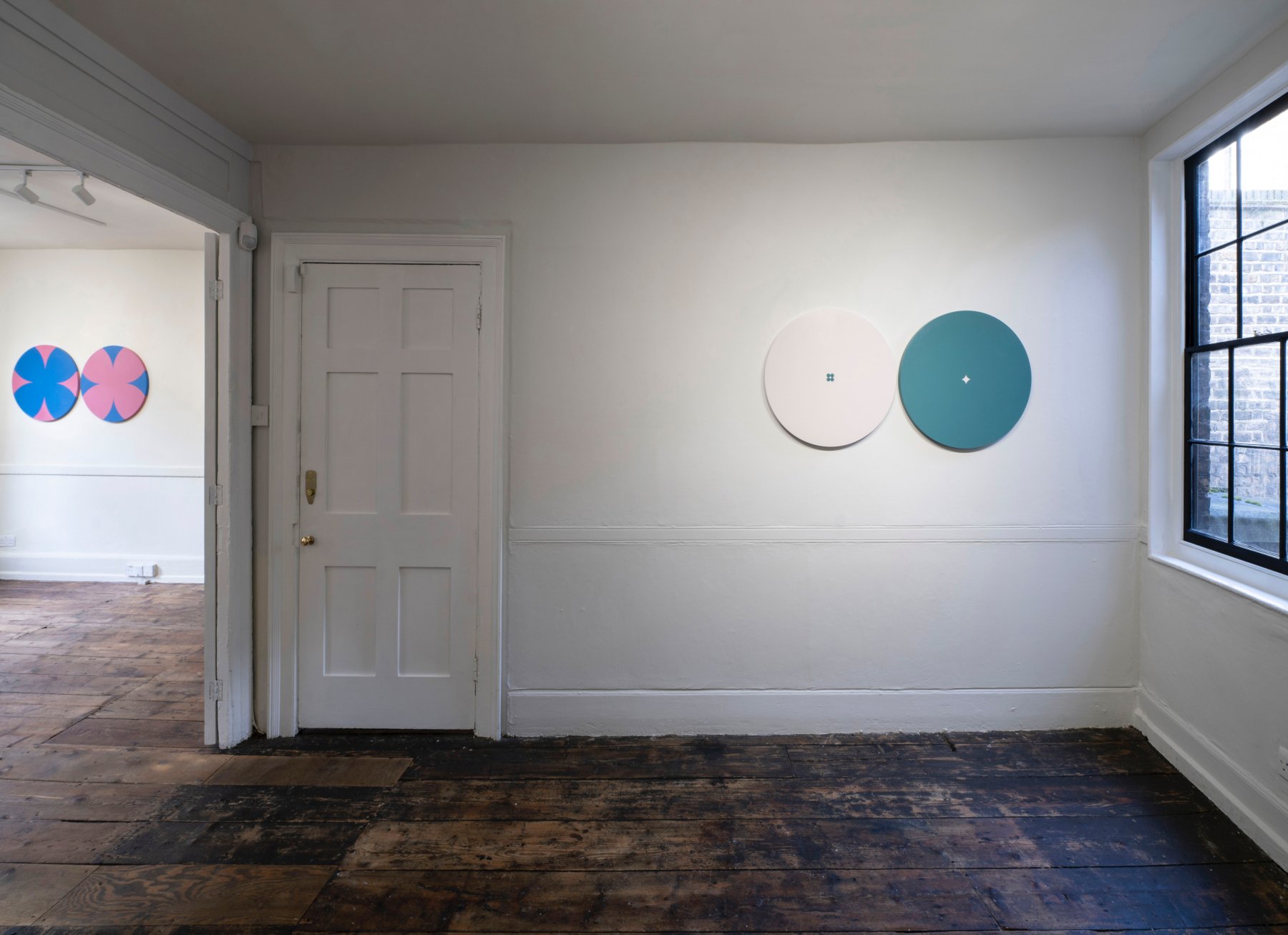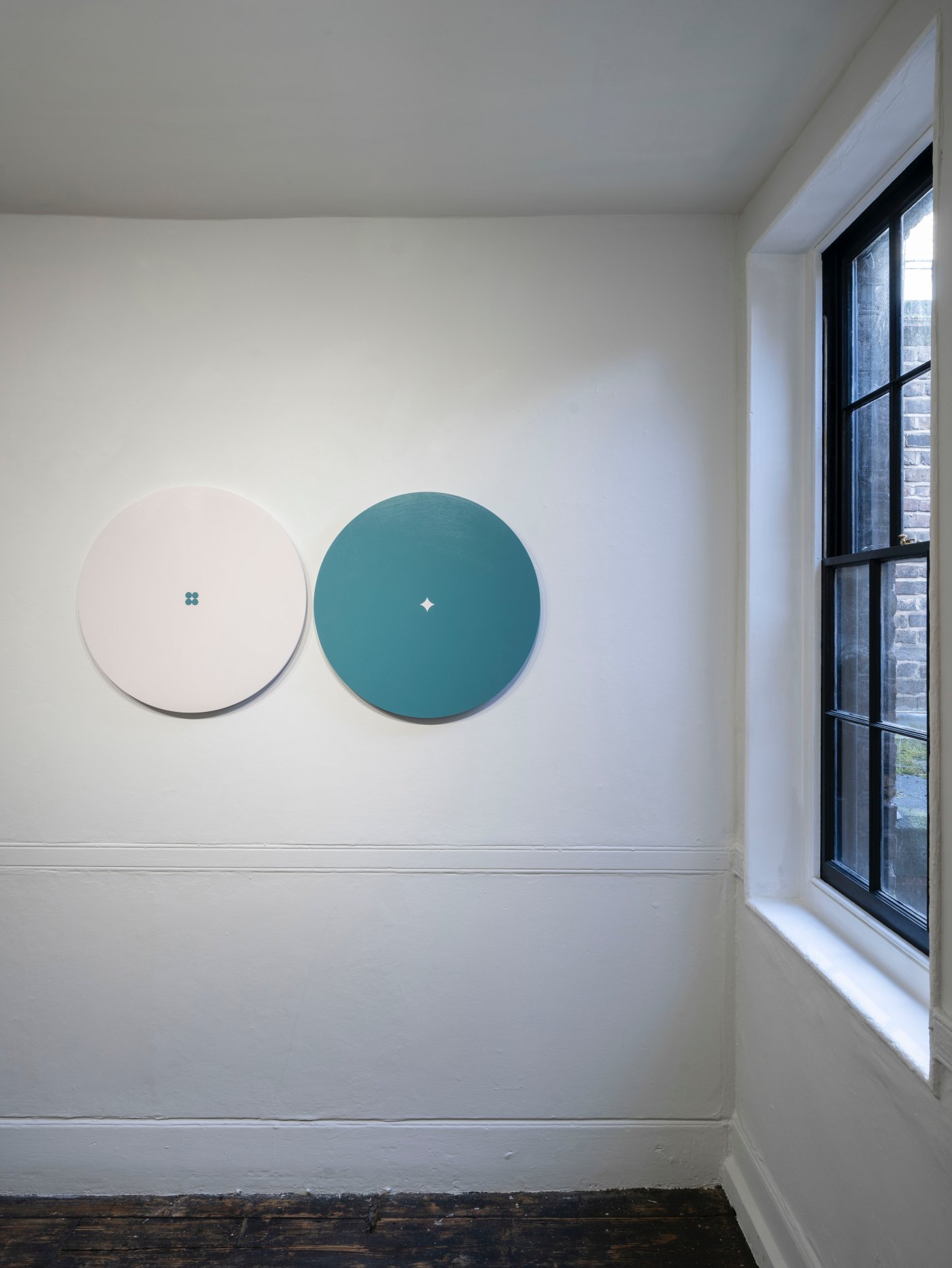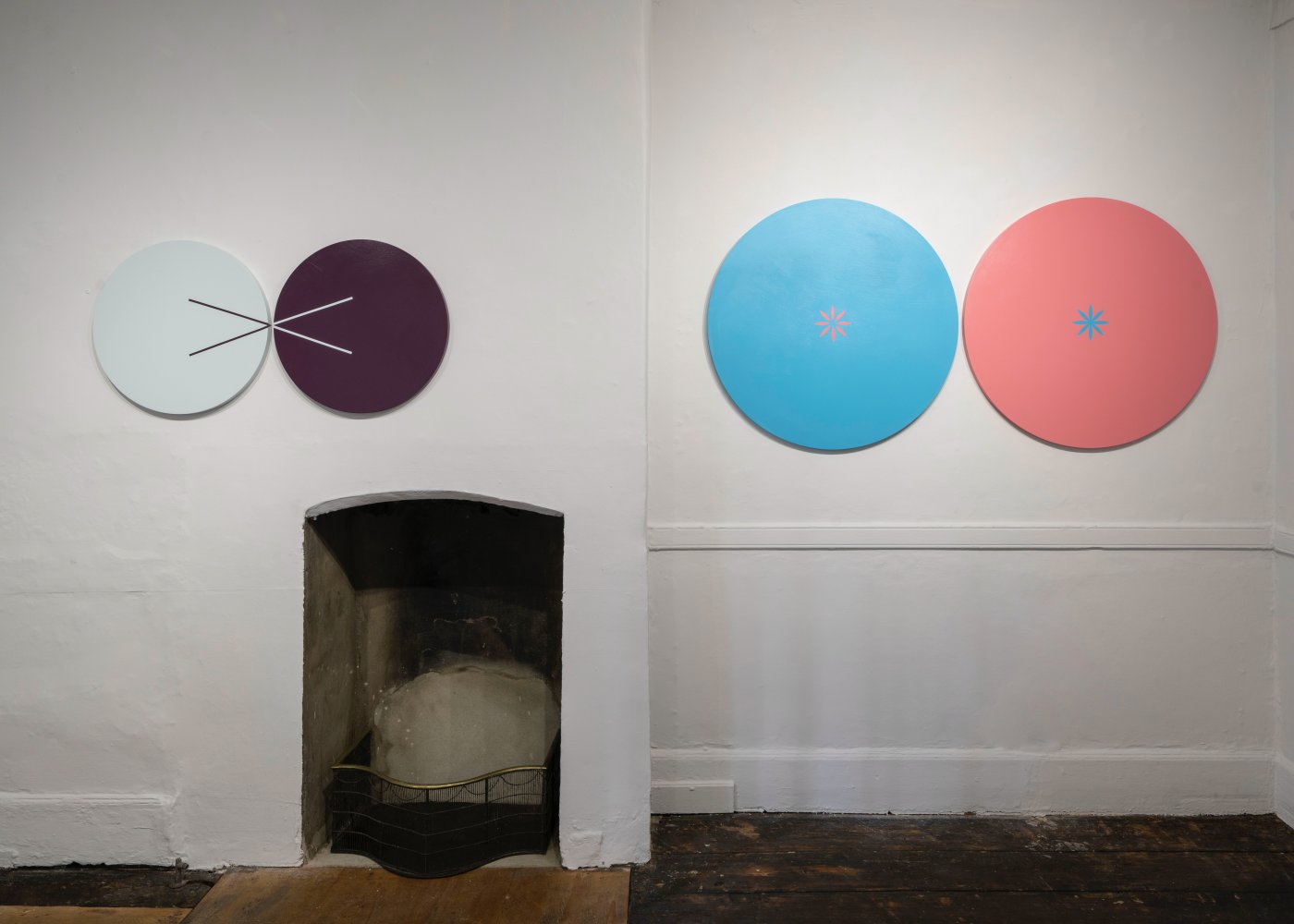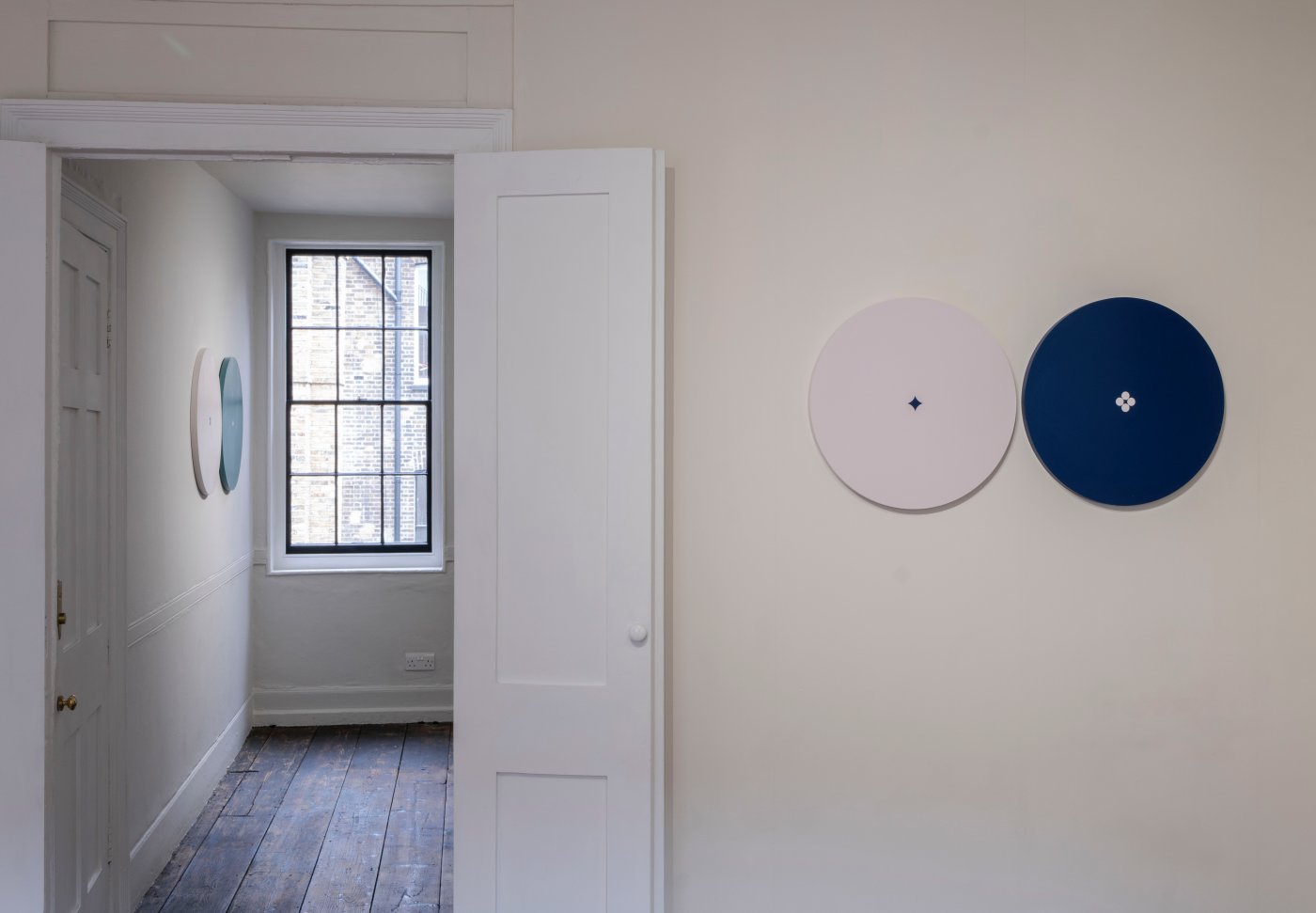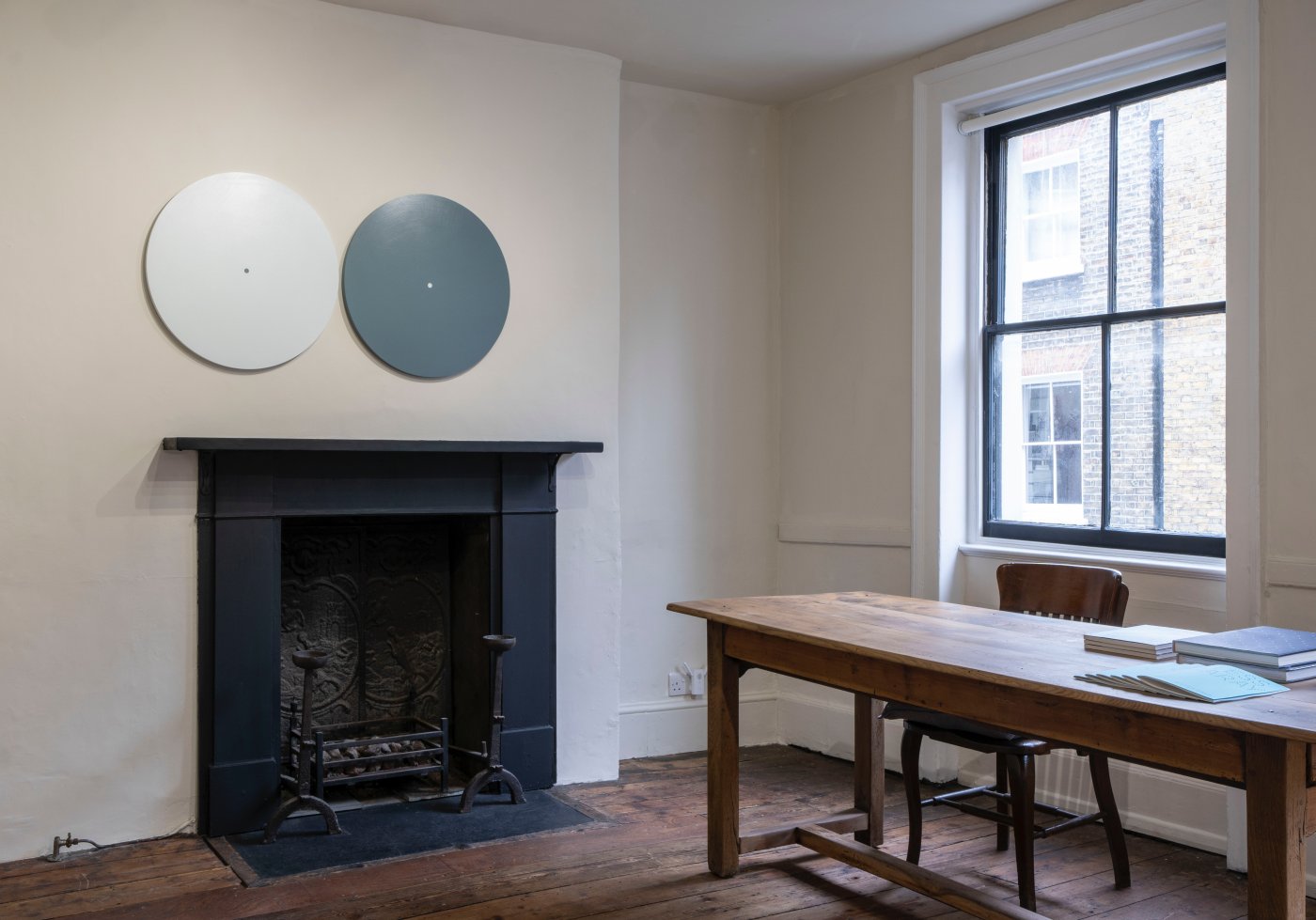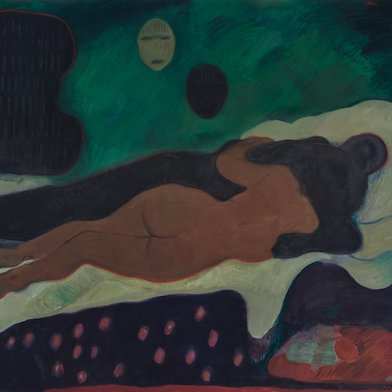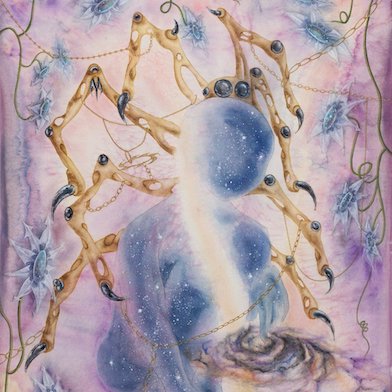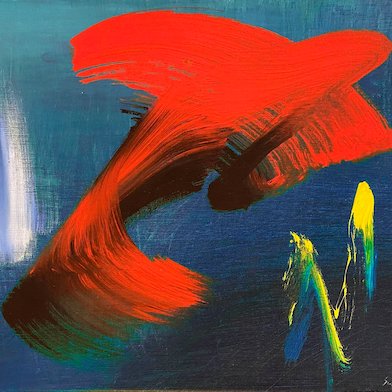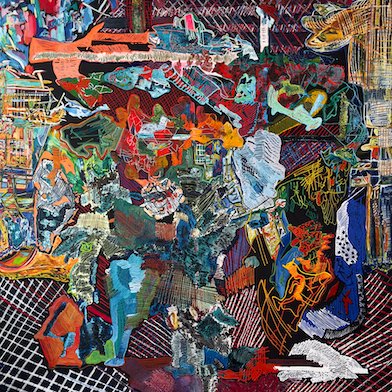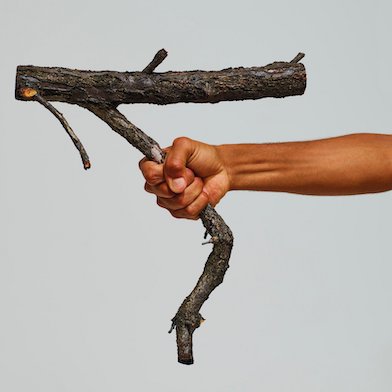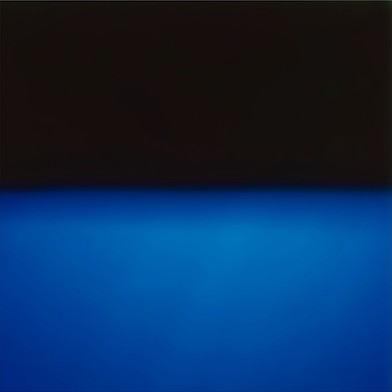Open: Mon-Fri 11am-6pm
Visit
Tess Jaray: For Your Eyes Only
Karsten Schubert Room 2, London
Wed 15 Mar 2023 to Sat 15 Apr 2023
44 Lexington Street, W1F 0LF Tess Jaray: For Your Eyes Only
Mon-Fri 11am-6pm
Artist: Tess Jaray
In hurried passage through London’s Victoria Station, Tess Jaray’s monumental public installation may go unnoticed. Bodies criss- crossing the terrazzo tiles may conceal parts of the formation, made up of 23 interlocking lozenges spread across the floor of the station’s vast concourse. Yet this natural reduction of the work seems fitting for an artist who has described her practice as reflecting ‘the sense of all experience of life being part of the whole, perceptible only in flashes and fragments’.
As a young girl, Jaray spent time wandering the landscapes of rural Worcestershire in England, where her family relocated from Austria in 1938 following annexation by Nazi Germany. She would assimilate her experiences of nature, in particular boundary spaces such as hedges and fences, into simple pencil drawings. At age 16 Jaray left for London, and joined Saint Martin’s School of Art in 1954. There, she met Singaporean-British artist Kim Lim, whose abstract sculptures developed a reciprocal subtlety of form. Works by the two artists and lifelong friends will be placed in dialogue at the 2023 Gwangju Biennale.
Jaray’s seminal explorations of space arose in the 1960s from a simple discovery orchestrated with masking tape placed horizontally across the canvas, with two lines entering at an angle. The artist had recently returned from Italy, where she travelled after graduating from the Slade School of Fine Art in 1960, and the influence of Renaissance and Baroque architecture and frescoes found its way into her work. In the painting Cupola Blue (1963), domed formations are suggested by the rust-brown trapezoidal shapes surrounded by teal, thin borders of light blue and green.
Since then, Jaray has sought to push structures and experiences to their pictorial extreme in the service of abstraction Drawing is central to the artist’s practice, with works originating from a careful mapping process. When it comes to the act of painting, Jaray’s surfaces come into being through meticulously chosen colours and structures. Precision is paired with playfulness, and the works come alive in their surroundings.
On view at Karsten Schubert London are Jaray’s ‘roundel’ paintings, which zero in on the circular form and push external experiences and geometries to their extreme once more. Begun in 2020, the paintings mark a significant departure for the artist, embracing greater economy of colour and form while retaining, if not augmenting, the characteristic strength of her compositions. In 2021, the paintings were featured in Jaray’s solo exhibition at Secession, Vienna, marking a significant homecoming for the artist to the city of her birth.
At the Royal Academy’s 2019 Summer Exhibition nine of Jaray’s ‘roundels’ in varying shades of purple were placed in a line high up on the wall, resting mischievously out of reach, aligned by a single white dot at their centres. At Karsten Schubert, works from this series are displayed in a similar fashion, emphasising the form’s definition as a circular decorative panel or architectural niche.
Whilst Jaray’s ‘roundels’ occasionally come in pairs, their sizes do not always match, as in the case of For Your Eyes Only, Pink & Turquoise (2020), where one circle in turquoise containing a pink dot is reciprocated by another, in pink and containing a turquoise dot, that is one centimetre larger in diameter. Across her paintings, these subtle differences, including brushstrokes that become visible at certain angles, reward the lingering glance and add depth and visual jest to their presupposed flatness.
Text by Tessa Moldan, courtesy Ocula.
About the artist
Tess Jaray was born in 1937 in Vienna, Austria, before coming to the United Kingdom in 1938 with her parents as part of the flight of Jewish refugees from the Nazis. The family settled in Worcestershire where Jaray grew up. She studied at Saint Martin's School of Art from 1954 to 1957 and at the Slade School of Fine Art, University College London from 1957 to 1960. In 1964 Jaray started teaching at Hornsey College of Art, working there until 1968 when she took up a role as the first female art teacher at the Slade School of Art, where she taught for three decades until 1999 when she was made Reader Emeritus.
Over the course of her distinguished career, Tess Jaray has developed a practice that despite sharing affiliations with minimalism, architectural drawing, Op Art and other movements, resists any singular classification. She has created her own pared-down visual language that focuses on the possibilities of space and how to express this through the reduction and control of form. Today Jaray continues to innovate and expand her practice from her studio in north London. She recently began to employ new geometric forms in her works.
An enduring facet in Jaray's art is the reduction of architectural form to the point of abstraction. The paintings transform architectural structures, details and surroundings into compositions that feel tangible yet distant through their use of geometry, colour, pattern, and perspective. Jaray examines with precision the deep and all- encompassing power of grand architecture and translates this experience onto a canvas, creating space, whether that be between the viewer and the artwork or within the painting itself. The viewer may perceive a three-dimensional form oscillating on the surface of the painting.
Jaray's work derives its refined aesthetic from a range of influences. The grand architecture of the Italian Renaissance and Baroque is a particular inspiration. First experiencing the art and architecture while travelling on a 'Grand Tour' of Italy in 1960, the formative experience of seeing these great works in their original setting prompted the artistic project that has engaged her for over half a century. She also finds inspiration in the formal abstraction of Islamic art and architecture, which she has gained through travels. Nonetheless, it is not only major monuments that interest the artist but also minutiae; the seemingly insignificant elements of a space that might easily be overlooked. Finding beauty in the ordinary, Jaray documents 'the detail'- the fragments of her surroundings - and subsequently reconceptualises this onto the canvas again.
Drawing is at the heart of Jaray's practice. She creates meticulous preparatory sketches and detailed drawings for all her paintings, and in doing so fills numerous sheets of paper, bringing together geometric forms and experimenting with them in patterns of varying complexity before finding one or two that would work on a larger scale. Jaray paints with flat brushstrokes, leaving a surface that to a large degree is devoid of any texture. She uses masking tape to map out her patterns on the canvas, the resulting finish is seamless. Combining colours of either tonal proximity or great contrast, she achieves a coalescence of dark and light. These colour relationships transform the compositions from simple geometric patterns to indeterminate, energetic spaces with forms that seem to be moving, suspended on the surface. The grounding colour of the painting's background further appears to control the movement of the forms.
Since the mid-1980s, Jaray has completed a succession of major art commissions in public places. The paving designs translate her patterns and ability to alter perception to a new platform, allowing people to orient themselves while treading the boundary between the feeling of stable ground and the instability of patterns. In Jaray's public commissions, her commitment to creating encompassing environments is also visible. On multiple occasions, this has involved designing not only the paving, but also railing, benches, walls and lampposts or combining the paving with paintings and prints. To this effect, she creates transitional spaces that negotiate different realms.
Biography by Viktoria Espelund
